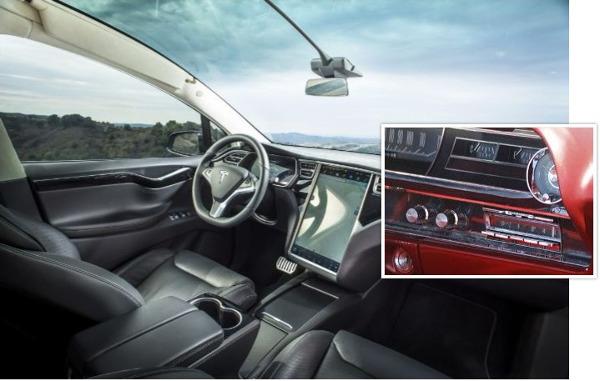Why Is Tesla Killing AM Radio?

Congratulations! You, my friend, are driving the wave of the future. While everyone else is burning dinosaur droppings, you are propelled ever onward by the magical energy of the sun and the wind. Gaia, the primal Mother Earth Goddess, loves you.
On the other hand, and I feel bad telling you this, you are also a murderer. One of my fondest childhood memories is carefully adjusting my radio’s spindly antenna and pulling in KMOX to listen to St. Louis Cardinal baseball. Now you want to kill that. Thanks a lot.
Your car is sleek. It’s powered by renewable energy. It drives itself down the road. The government gave you money to help you buy it. It accelerates like nobody’s business. It’s a Tesla, for heaven’s sake. And it’s killing AM radio. That’s right — your falcon-wing Model X does not have an AM radio. You can only find AM stations streamed via the TuneIn app.
From my back porch I can watch SpaceX rockets blasting off, and occasionally landing, at distant Cape Canaveral. SpaceX is a heck of a company, and Elon Musk is a heck of a guy. The omission of an actual AM receiver is probably not due to any personal malice toward technology.
I surmise three reasons for Tesla omitting AM radios: First, an AM radio might seem old-fashioned in a car of the future. Second, there are lots of other listening options (like the internet). Third, and most important, is noise. Try this sometime: Turn on an AM radio, then fire up your DeWalt power drill. Whoa!
Now, all cars generate electromagnetic interference, and precautions must be taken to mitigate its effects on the radio. Radio interference is a problem in some hybrids, and it’s worse in an all-electric car. The mitigation must be robust, and apparently Tesla has decided that clean AM reception is no longer worth the effort.
The omission of an actual AM receiver is probably not due to any personal malice toward technology. I surmise three reasons for Tesla omitting AM…
An AM radio is designed to respond to changes in amplitude in the received carrier waveform; those changes convey the audio signal. However, the radio struggles to differentiate between the audio signal and amplitude varying noise. In contrast, in FM radio, the carrier is frequency-modulated; the radio can reject amplitude-varying noise.The Tesla Model X does not have an AM receiver, and neither does the BMW i3. The older Tesla Model S does have an AM radio. But here’s the thing: The future of vehicles is electric. As more and more cars and trucks go electric, I suspect that more companies will follow the lead of Tesla and BMW, and fewer vehicles will have AM radios. Most AM listening is done while driving. Ergo, in a few decades, AM broadcasting may disappear. “AM” stations will be AM in name only; they won’t modulate a carrier, and instead just excite some internet electrons.
Maybe listening to AM via the internet is better than actual radio. But to me, it’s not. For starters, the static in an AM broadcast is as integral to the listening experience as the surface noise on a vinyl record. I’ll miss Cardinal baseball accompanied by the mysterious static that informed me of nearby thunderstorms. European countries are already pulling the plug on AM broadcasting. Call it progress, call it collateral damage, call it whatever you want. For me, it’s another stake in the heart of my childhood memories.
Finally, let’s consider a tangentially related issue. Maybe you never listened to a ballgame and don’t care that AM broadcast radio might be doomed. But I bet you fondly remember listening to Dark Side of the Moon on FM radio. Then be advised that Norway, taking the lead in Europe, is shutting down all of its FM broadcast stations.
Just sayin’.





























































